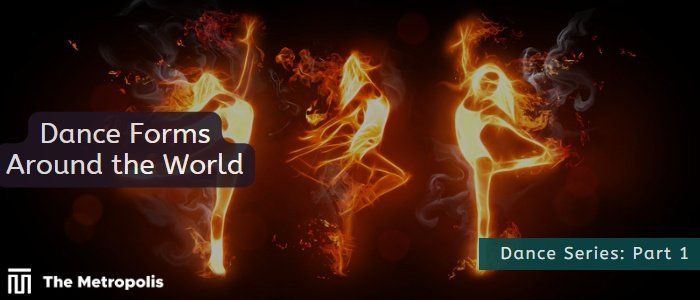Anjum Anam –
Dance is the movement of the body rhythmically, usually to music and within a given space, to express an idea or emotion, release energy, or simply take delight in the movement itself. Dance is a powerful impulse, but the art of dance is that impulse channeled by skillful performers into something that becomes intensely expressive and that may delight spectators who have no wish to dance themselves.
These two concepts of the art of dance — dance as a powerful impulse and dance as a skillfully choreographed art practiced largely by a professional few — are the two most important connecting ideas running through any consideration of the subject. In dance, the connection between the two concepts is stronger than in some other arts, and neither can exist without the other. This article is all about notable dance forms around the world.
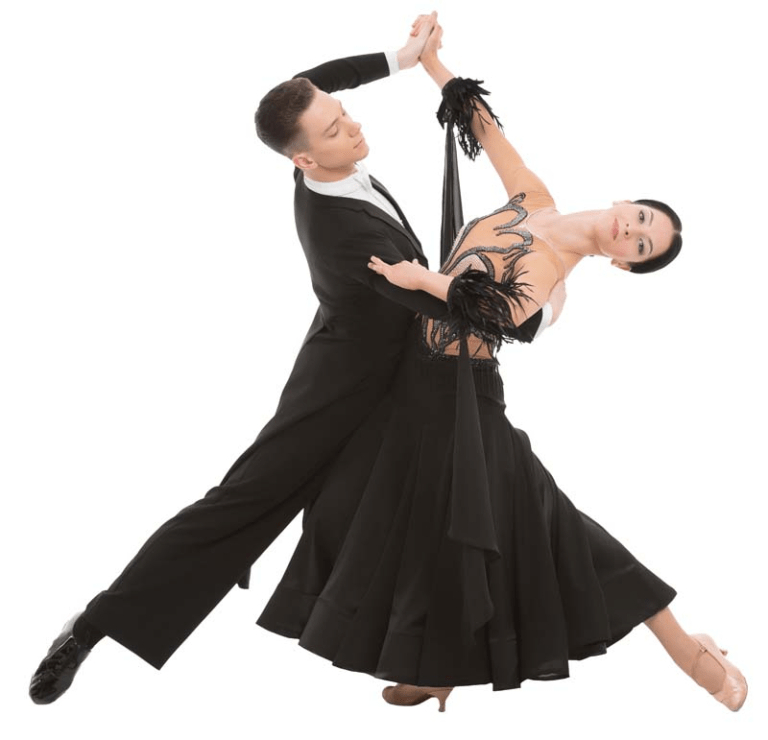
Waltz provides the origin of modern ballroom dance in that moved it away from a group sequence of movement to the independent movement of an individual couple, originating in southern Germany in the 17th century, the popularity of the Waltz dance grew with the music of Johann Strauss and exploded to great popularity in the 20th century. It is the “backbone dance” of the ballroom and is the basis for many dances. A truly romantic dance, the Waltz is comprised of soft, round, flowing movements. The Waltz is a smooth dance that travels around the line of dance. Characterized by its “rise and fall” action, the Waltz includes a step, slide, and step in 3/4 time. Dancers should move their shoulders smoothly, parallel with the floor instead of up and down. Dancers must strive to lengthen each step. On the first beat of the music, a step is taken forward on the heel, then onto the ball of the foot with a gradual rise to the toes, continuing to the second and third beats of the music. At the end of the third beat, the heel is lowered to the floor to the starting position.
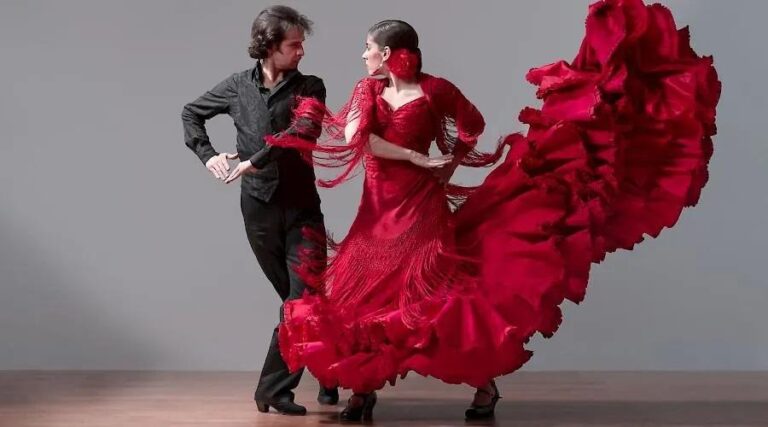
Flamenco is a form of song, dance, and instrumental (mostly guitar) music commonly associated with the Andalusian Roma (Gypsies) of southern Spain. (There, the Roma people are called Gitanos). The roots of flamenco, though somewhat mysterious, seem to lie in the Roma migration from Rajasthan (in northwest India) to Spain between the 9th and 14th centuries. These migrants brought with them musical instruments, such as tambourines, bells, and wooden castanets, and an extensive repertoire of songs and dances. In Spain, they encountered the rich cultures of the Sephardic Jews and the Moors. Their centuries-long cultural intermingling produced the unique art form known as flamenco.
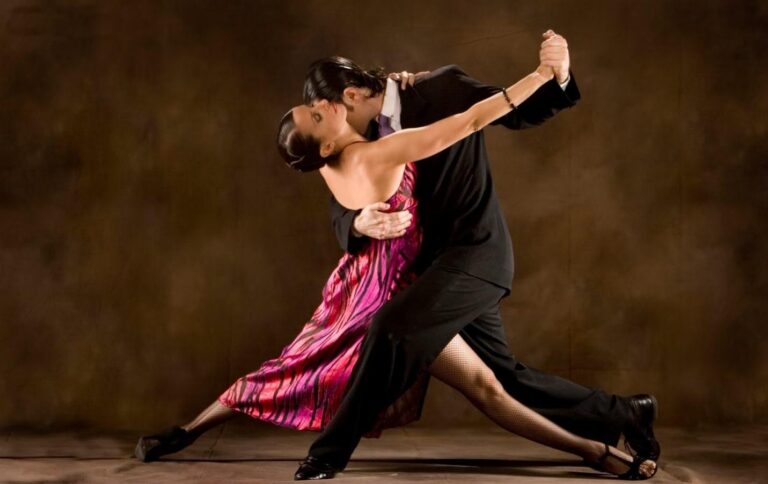
Tango is one of the most famous partner dances that emphasize the vibrant and playful style of movement, rich expressions, and improvisation and requires close connection and passion between dancers. It is currently practiced by millions of people from all around the world, who have learned to love not only a traditional tango style that was popularized in the late 19th and early 20th century but also many of its other modern tango dance variations created in Argentina and many other countries. The core concept of the tango dance revolves around leader and follower, where the leader through their embrace gives openings to the follower what to do, and the follower then chooses how he will respond. The result of this cooperative process can be a highly improvisational dance that fully captivates the attention of both the dancers and spectators. The attire of the tango dancers is also important because it significantly impacts the visual appeal of the dance, most notably with female dancers promoting their elegance and sensuality by performing passionate tango dance routines while wearing revealing clothing and high heels.
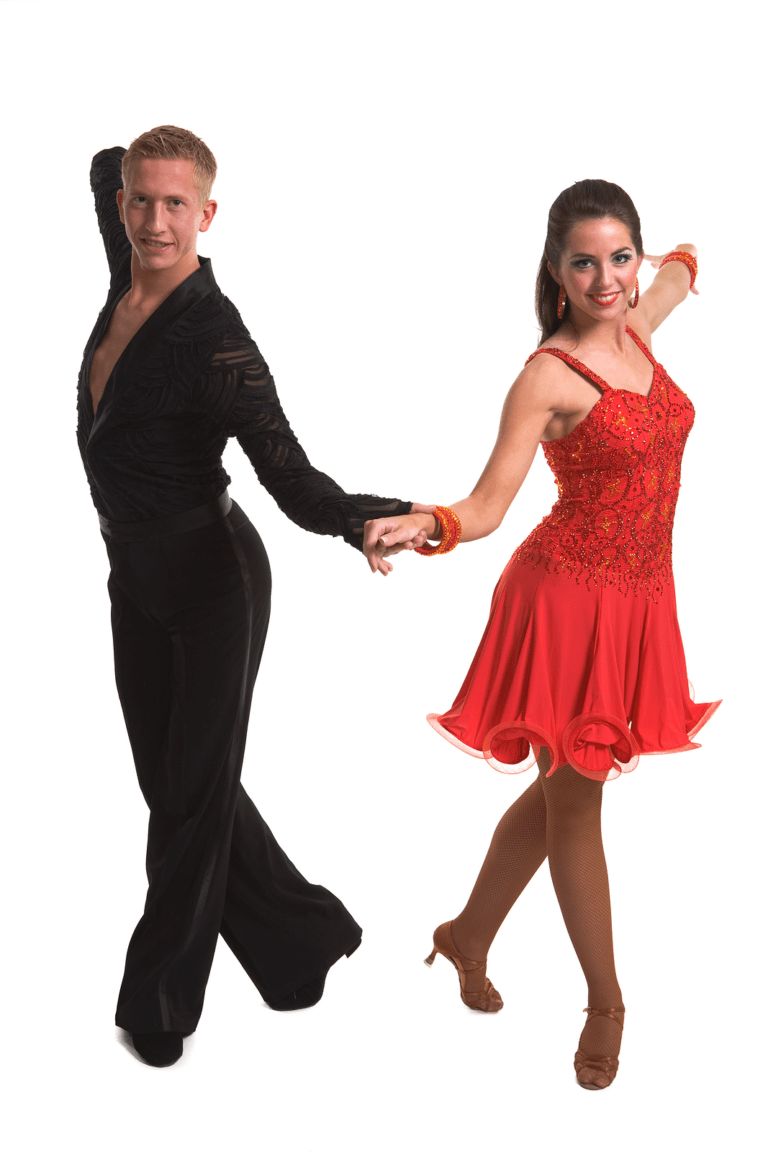
Cha Cha Cha is a fun, flirtatious dance with playful energy. It is a blend of other Latin dances, especially mambo, and rumba. The major difference is a triple step (cha cha cha) that replaces the slow step. Cha cha cha is widely recognizable by its catchy rhythm – one, two, cha, cha, cha. It is easy to learn and fun to dance. Like so many Latin dances, it originates from Cuba. It was developed by the Cuban composer and violinist Enrique Jorrin in the middle of the 1950s. Originally it was known as a slowed-down mambo or “the triple mambo”, because of the three quick steps. It gained instant popularity due to its simplicity. In the time it evolved into a separate dance and although it was originally known as the cha-cha-cha, the name was shortened to the cha-cha. Cha cha can be danced to almost any music with a good beat, from traditional Latin rhythms to club music, from country to pop. Its popularity can be heard in the music of Ricky Martin, Jennifer Lopez, Marc Anthony, Tom Jones, Carlos Santana, and many others. Cha cha cha is very much a dance of today.
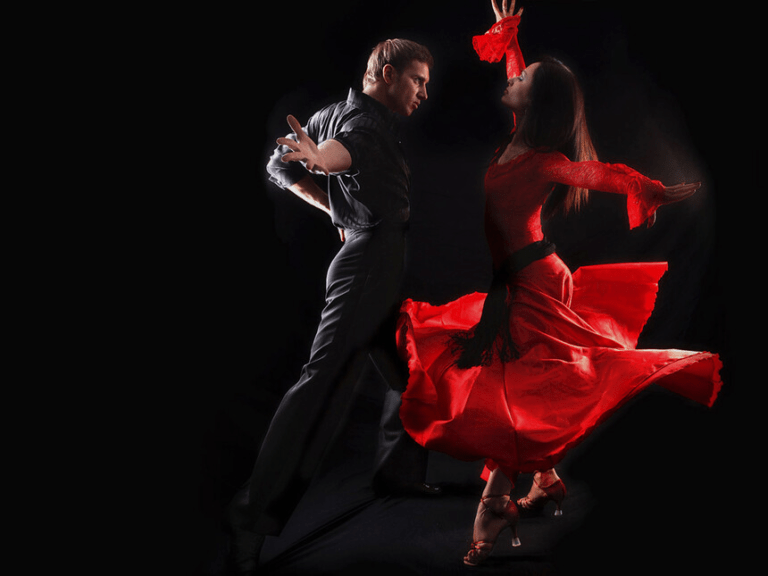
Salsa is characterized by vibrant, energetic hip-swinging inflamed by an intense beat—coalesced in the 1960s as a blending of Cuban mambo and Latin jazz infused with choreographic and stylistic imprints from Puerto Ricans living in New York City. In Colombia and Venezuela, salsa gave expression and identity to the marginalized barrios of urban centers. Salsa dancers constantly manipulate steps to create new ones, and competition becomes part of the fun. Salsa has broken the barriers of ethnicity and class to become the epitome of Latino pride and sentiment. By the 21st century, salsa was considered a world beat, a variety of music and dance performed throughout the world.



